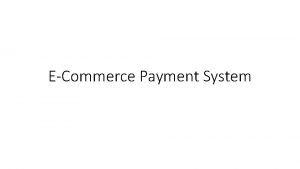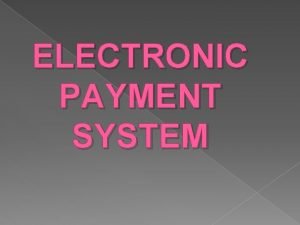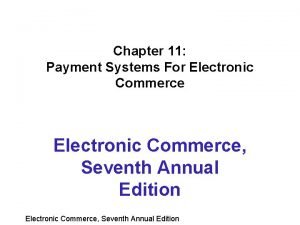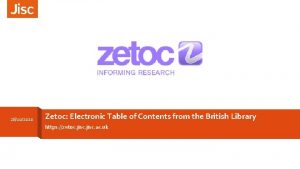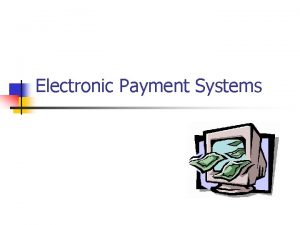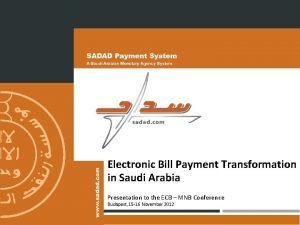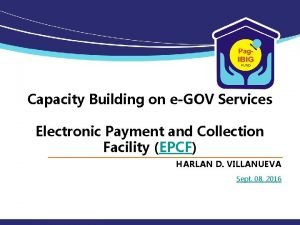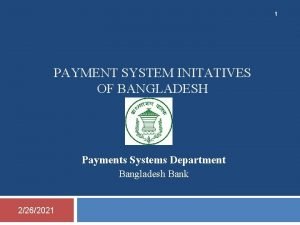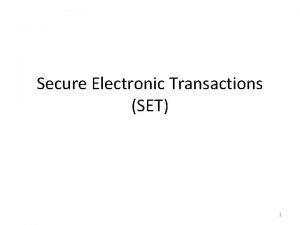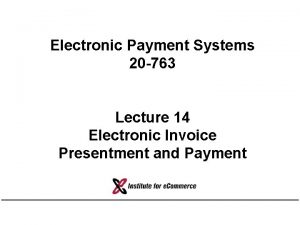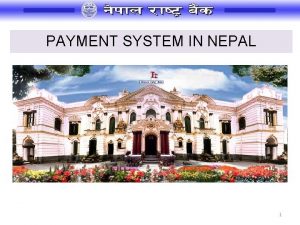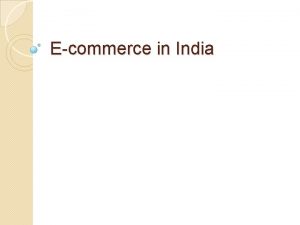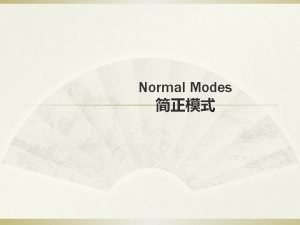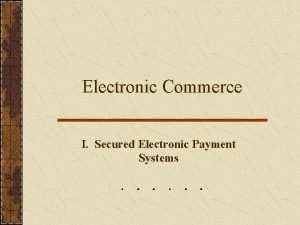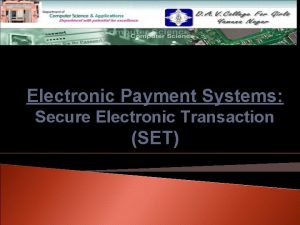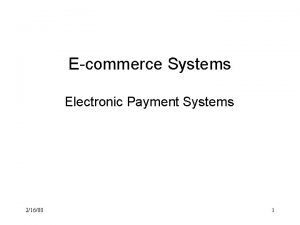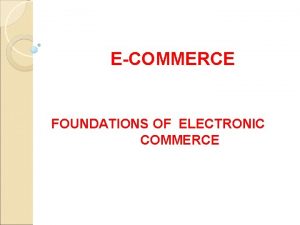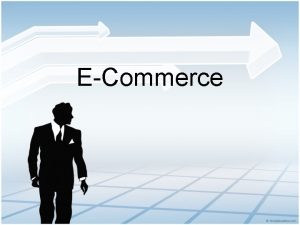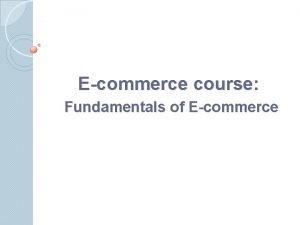Electronic Payment Systems Contents ECommerce Payment Systems Modes
















- Slides: 16

Electronic Payment Systems

Contents E-Commerce Payment Systems Modes of electronic payments q. Credit Card q. Debit Card q Smart Card q. E-Money q. Electronic Fund Transfer

E-Commerce Payment Systems E-Commerce or Electronics Commerce sites use electronic payment where electronic payment refers to paperless monetary transactions. Being user friendly and less time consuming than manual processing, helps business organization to expand its market reach / expansion. BACK

Modes of electronic payments are: • Credit Card • Debit Card • Smart Card • E-Money • Electronic Fund Transfer (EFT) BACK

Credit Card Payment using credit card is one of most common mode of electronic payment. Credit card is small plastic card with a unique number attached with an account. It has also a magnetic strip embedded in it which is used to read credit card via card readers.

Following are the actors in the credit card system. ◦ The card holder - Customer ◦ The merchant - seller of product who can accept credit card payments. ◦ The card issuer bank - card holder's bank ◦ The acquirer bank - the merchant's bank ◦ The card brand - for example , visa or master card.

Credit Card Payment Process BACK

Debit Card Debit card, like credit card is a small plastic card with a unique number mapped with the bank account number. It is required to have a bank account before getting a debit card from the bank. The major difference between debit card and credit card is that in case of payment through debit card, amount gets deducted from card's bank account immediately and there should be sufficient balance in bank account for the transaction to get completed. Whereas in case of credit card there is no such compulsion.

Debit cards free customer to carry cash, cheques and even merchants accepts debit card more readily. Having restriction on amount being in bank account also helps customer to keep a check on his/her spending. Debit cards usually also allow for instant withdrawal of cash, acting as the ATM card for withdrawing cash. BACK

Smart Card Smart card is again similar to credit card and debit card in appearance but it has a small microprocessor chip embedded in it. It has the capacity to store customer work related/personal information. Smart card is also used to store money which is reduced as per usage. Smart card can be accessed only using a PIN of customer. Mondex and Visa Cash card are example of smart cards.

Smart cards are secure as they stores information in encrypted format and are less expensive/provides faster processing. Advantages: ◦ More Secure ◦ Safe to Transport ◦ Complete identification ◦ Prevents Fraud Disadvantages: ◦ Easily Lost ◦ Slow Adoption ◦ Possible Risk of Identify Theft BACK

E-Money transactions refers to situation where payment is done over the network and amount gets transferred from one financial body to another financial body without any involvement of a middleman. E-money transactions are faster, convenient and saves a lot of time.

Online payments done via credit card, debit card or smart card are examples of e-money transactions. Another popular example is e-cash. In case of e-cash, both customer and merchant both have to sign up with the bank or company issuing e-cash. Advantages: Anonymity and intractability can be maintained. No issues regarding "Double spending”. Disadvantages Communication Overheads Massive Databases BACK

Electronic Fund Transfer It is a very popular electronic payment method to transfer money from one bank account to another bank account. Accounts can be in same bank or different bank. Fund transfer can be done using ATM (Automated Teller Machine) or using computer. The term covers a number of different concepts: Electronic bill payment in online banking, which may be delivered by EFT or paper check. Transactions involving stored value of electronic money, possibly in a private currency Electronic Benefit Transfer

Electronic Fund Transfer Process Now a day, internet based EFT is getting popularity. In this case, customer uses website provided by the bank. Customer logins to the bank's website and registers another bank account. He/she then places a request to transfer certain amount to that account. Customer's bank transfers amount to other account if it is in same bank otherwise transfer request is forwarded to ACH (Automated Clearing House) to transfer amount to other account and amount is deducted from customer's account. Once amount is transferred to other account, customer is notified of the fund transfer by the bank. BACK

THANKS BACK TO INDEX
 Electronic examples
Electronic examples Eps system meaning
Eps system meaning Payment systems for electronic commerce
Payment systems for electronic commerce Zetoc
Zetoc Scrip exchange
Scrip exchange Electronic field production
Electronic field production Payment methods objective
Payment methods objective Future of electronic payment system
Future of electronic payment system Evolution of electronic payment system
Evolution of electronic payment system Payer payee
Payer payee Electronic bill presentation and payment
Electronic bill presentation and payment Epcf enrollment form
Epcf enrollment form Npsb vs eft
Npsb vs eft Security electronic transaction
Security electronic transaction What is eipp
What is eipp Nepal electronic payment system
Nepal electronic payment system Principles of electronic communication systems 3rd edition
Principles of electronic communication systems 3rd edition
